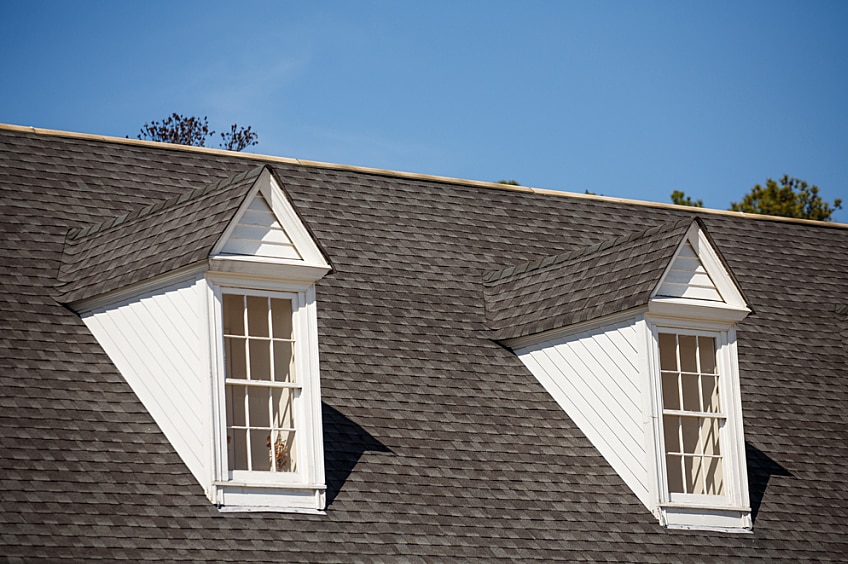When your home needs protection from rain and snow, your roof is its first line of defense. Homeowners who also want to maximize light and space may choose to add a dormer roof. What is a dormer roof? A dormer is like a small room with a window that projects out vertically from the rest of a sloped roof. When you convert attic space into living space, a dormer allows cross ventilation, brings in natural light, and adds architectural style.
Here's what you need to know about the different types of this style of roof as well as how a dormer roof can improve your house's function and style.
What Is a Dormer Roof?
A dormer is built and set into a slanted roof. Notably, it always features at least one window. Dormers have roofs and come in a variety of sizes and shapes. The right choice of dormer will depend upon the style of your home. Dormers are great compliments to a home's existing architecture that add visual flair and curb appeal.
Dormers can give your roof a sense of added height to a horizontal-shaped dwelling. It creates usable space, headroom, and natural light, allowing it to offer a range of unique design opportunities.
What Are the Benefits of a Dormer Roof?
Apart from adding style, symmetry, and an attractive focal point to your home's exterior, dormers allow ventilation and light into dark spaces. They also provide more room, sometimes making it possible to tuck a bathroom or bedroom into a top floor area. Dormers also break up the long expanse of your roof, creating a new architectural detail.
What Are the Different Types of Dormer Roofs?
Dormer roofs come in many forms. The gable dormer, which features two walls and a triangular face, is the most common kind found on Craftsman, Tudor, and other modern homes. Gabled dormers, which feature a peak at the top and are connected to the roof by two valleys, gained popularity in mid-century Cape Cod–style homes. With a flared gable, the dormer roof flares out to help shade windows, and the overhang can be supported by corbels.
Instead of a gabled roof's single ridge, hipped dormers are designed with the roof sloping back as it rises and the hips jutting out from a peak. This type of dormer usually mirrors the hipped roof of the house, which will have four slanting sides coming together in a peak.
Other styles of dormer roofs include a barrel dormer, which has a rounded top, and an eyebrow dormer, named for its curved shape and lack of walls. The shed dormer, another popular style since the 1960s, features a single roof plane that joins the roof at the very top or farther down the roof. Shed dormers can accommodate different-sized windows, making them more common among bungalows and Craftsman-style homes. Extended shed dormers span almost the full width of a house.
Rather than sitting directly on top, most dormer types can be inset into the roof. Recessing the dormer allows for deeper windows.
How Are Dormer Roofs Installed?
While it may take a bit of work to install, a dormer can add a distinct visual flair to your home. More than simply just an aesthetic choice, however, a dormer also creates space and natural light, letting you turn a stuffy attic storage space into a comfortable living area.
Because dormers join the roof in two different places—the dormer's walls and its own roof—proper installation is even more important. The dormer will need ice and water protection as well as step flashing at those vulerable areas to ensure the house stays water tight and dry.
If you're looking for inspiration for your roof style, check out the GAF style guide or reach out to a contractor certified by GAF*.
*Contractors enrolled in GAF certification programs are not employees or agents of GAF, and GAF does not control or otherwise supervise these independent businesses. Contractors may receive benefits, such as loyalty rewards points and discounts on marketing tools from GAF for participating in the program and offering GAF enhanced warranties, which require the use of a minimum amount of GAF products. Your dealings with a Contractor, and any services they provide to you, are subject to the Contractor Terms of Use.

